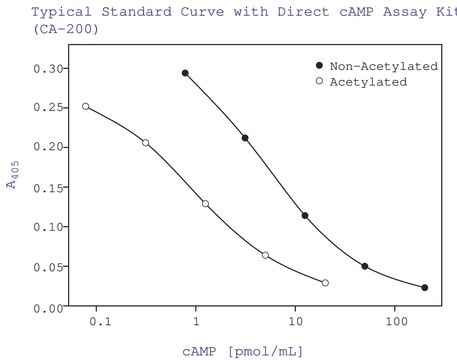CG200
cGMP Enzyme Immunoassay Kit, Direct
sufficient for 96 assays
Seleccione un Tamaño
MXP 18,183.00
Fecha estimada de envío30 de mayo de 2025
Seleccione un Tamaño
About This Item
MXP 18,183.00
Fecha estimada de envío30 de mayo de 2025
Productos recomendados
uso
sufficient for 96 assays
Nivel de calidad
técnicas
ELISA: suitable
Condiciones de envío
wet ice
temp. de almacenamiento
−20°C
Información sobre el gen
human ... PRKG1(5592) , PRKG2(5593)
Aplicación
Solo componentes del kit
- 0.1 M Hydrochloride Acid 1 x 30
- Acetic Anhydride 1 x 1
- cGMP-Alkaline Phosphatase Conjugate 1 x 5
- cGMP EIA Antibody Rabbit Anti-cGMP 1 x 5
- Cyclic GMP Standard 1 x 0.5
- Goat Anti-Rabbit IgG Coated 96 Well Microtiter Plate 1 ea
- Neutralizing Reagent 1 x 6
- p-Nitrophenyl Phosphate Substrate Solution 1 x 20
- Plate Sealer 1 ea
- Stop Solution 1 x 5
- Triethylamine 1 x 2
- Wash Buffer Concentrate 1 x 30
Palabra de señalización
Danger
Frases de peligro
Clasificaciones de peligro
Acute Tox. 2 Inhalation - Acute Tox. 3 Dermal - Acute Tox. 4 Oral - Eye Dam. 1 - Flam. Liq. 3 - Met. Corr. 1 - Skin Corr. 1A - STOT SE 3
Órganos de actuación
Respiratory system
Riesgos supl.
Código de clase de almacenamiento
3 - Flammable liquids
Punto de inflamabilidad (°F)
120.2 °F
Punto de inflamabilidad (°C)
49 °C
Elija entre una de las versiones más recientes:
Certificados de análisis (COA)
¿No ve la versión correcta?
Si necesita una versión concreta, puede buscar un certificado específico por el número de lote.
¿Ya tiene este producto?
Encuentre la documentación para los productos que ha comprado recientemente en la Biblioteca de documentos.
Active Filters
Nuestro equipo de científicos tiene experiencia en todas las áreas de investigación: Ciencias de la vida, Ciencia de los materiales, Síntesis química, Cromatografía, Analítica y muchas otras.
Póngase en contacto con el Servicio técnico










